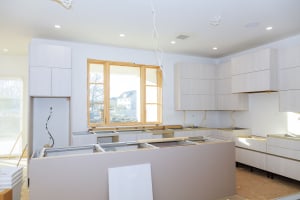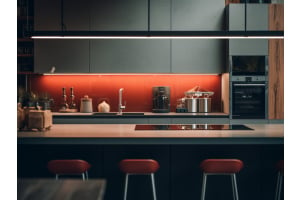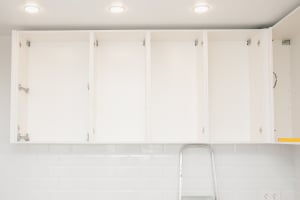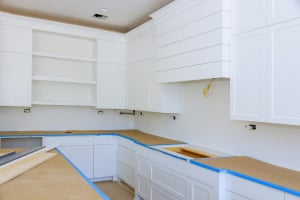Whether you are installing a new kitchen or looking to give your old one a revitalized look, stained or painted cabinet doors are an easy way to express your style and bring the doors to life. Staining wood is one of the more popular DIY home improvement projects that can greatly impact the overall aesthetic of a room–without breaking the bank.
When it comes to colors of stains and unique cabinet door paint ideas, the options can seem endless. This beginner’s guide from 27estore will help you narrow down your stain selection and provide helpful tips so you can complete your home project with ease.
Selecting a Stain
Choosing the right stain is a mix of personal preference and technical specifications. To start, decide on the tone and intensity of the mood you hope to achieve. Do you want a lighter stain or are you hoping to deepen your wood appearance? Do you prefer warm or cool tones?
Consider using the natural light of the room and the overall color scheme to help determine the best aesthetic match. A bright, well-lit room will balance dark wood while a dimly-lit space will feel more spacious with lighter accents.
The type of wood you are staining will impact your choice, too. Open-grain wood types will absorb more stain due to their porous nature, while closed-grain woods will absorb less stain.
There are also a variety of stain types. Similar to oil paints, oil-based stains have a strong odor and require proper ventilation. They also may not be as beginner-friendly to work with. Other options include water-based and gel stains.
Preparing Surfaces and Workspaces
Before you get started, preparing your workspace will help keep you organized. If you are working indoors, be sure your space is well-ventilated. Taking the cabinet doors off their hinges makes them easier to work on, but if you’re wondering how to paint kitchen cabinet doors without removing them, you can use painter's tape to protect them and you’ll want to remove the hardware like pulls and knobs with a screwdriver.
Whether you keep the doors on or not, be sure to protect your area with drop cloths or other protective covering. Grease and debris can build up on kitchen cabinets, so you can give your cabinet doors a good clean using trisodium phosphate (TSP) or mineral spirits. TSP is a powdered cleaning agent while mineral spirits are solvents used to thin oils and are best suited for heavy grease build-up. Whichever cleaning method you use, follow the manufacturer’s instructions and wear gloves.
Sanding
If you aren’t using a stripper to remove stubborn old stains, using sandpaper is the next option. Working with the grain of the wood, use 120 medium-grit or 220 fine-grit sandpaper to prep the surface of the wood for staining.
Remove all dust from sanding, especially in any grooves or detailing–anything left behind will mix with the stain and leave an unwanted gritty texture. You can choose to prime the wood with a wood conditioner, but this may not be necessary.
Applying Stain
Before applying the stain, thoroughly mix it according to the can’s instructions. Work with a paintbrush or cloth and go in the direction of the grain, applying the stain and wiping away any excess as you go. The darker you want the stain, the more coats you will need.
Allow the stain to completely dry between coats, or your doors may feel tacky. Keeping a fan running will help dry out the layers of stain.
Final Touches
Once you are satisfied with the color and the cabinets are completely dry, you can seal them with a polyurethane finish. After, you can reinstall the hardware and reattach the hinges you removed from the doors.
If you don’t have the time or desire to stain your cabinet doors yourself, 27estore has your back with pre-painted cabinet doors that are ready to be hung!













